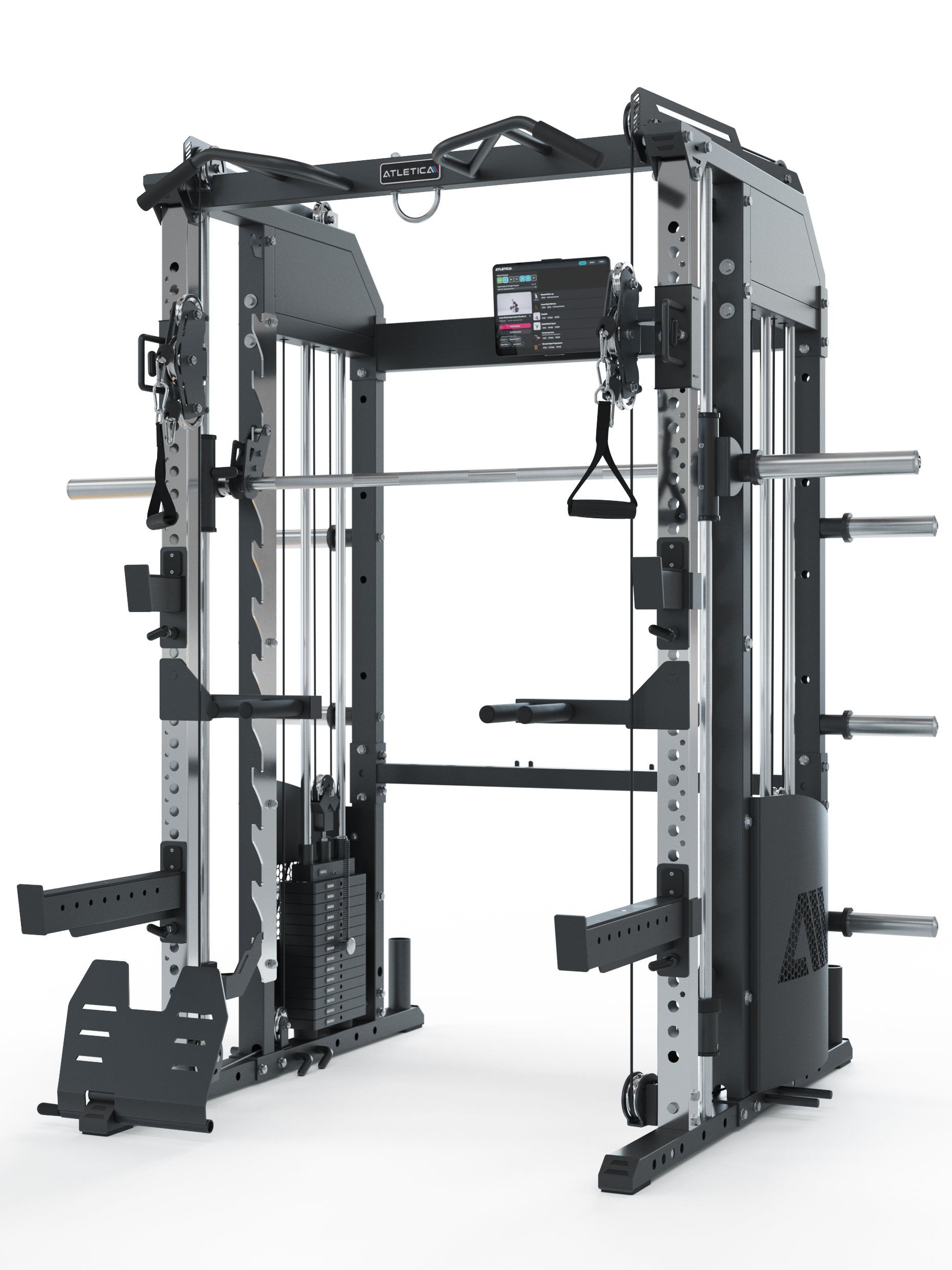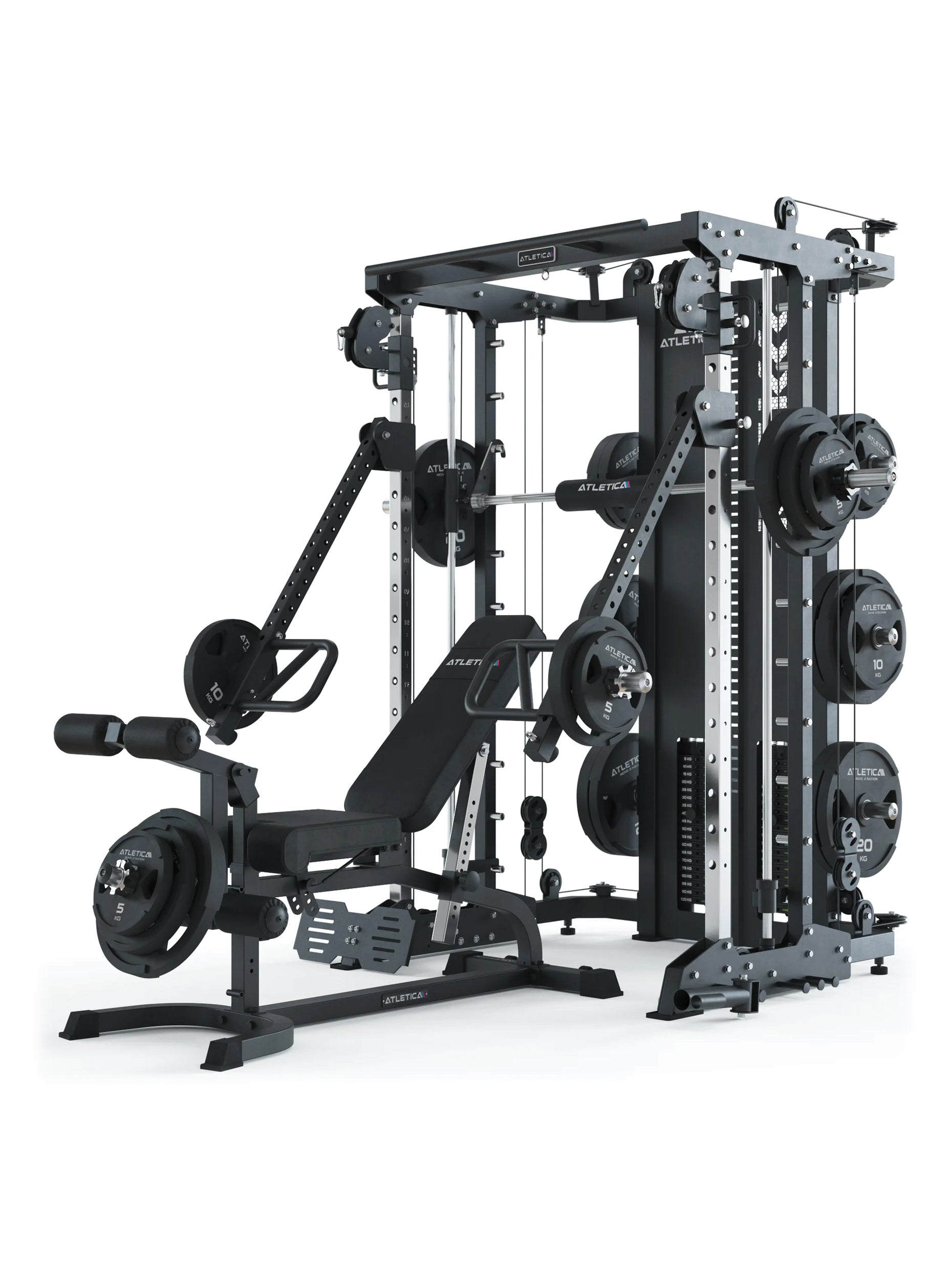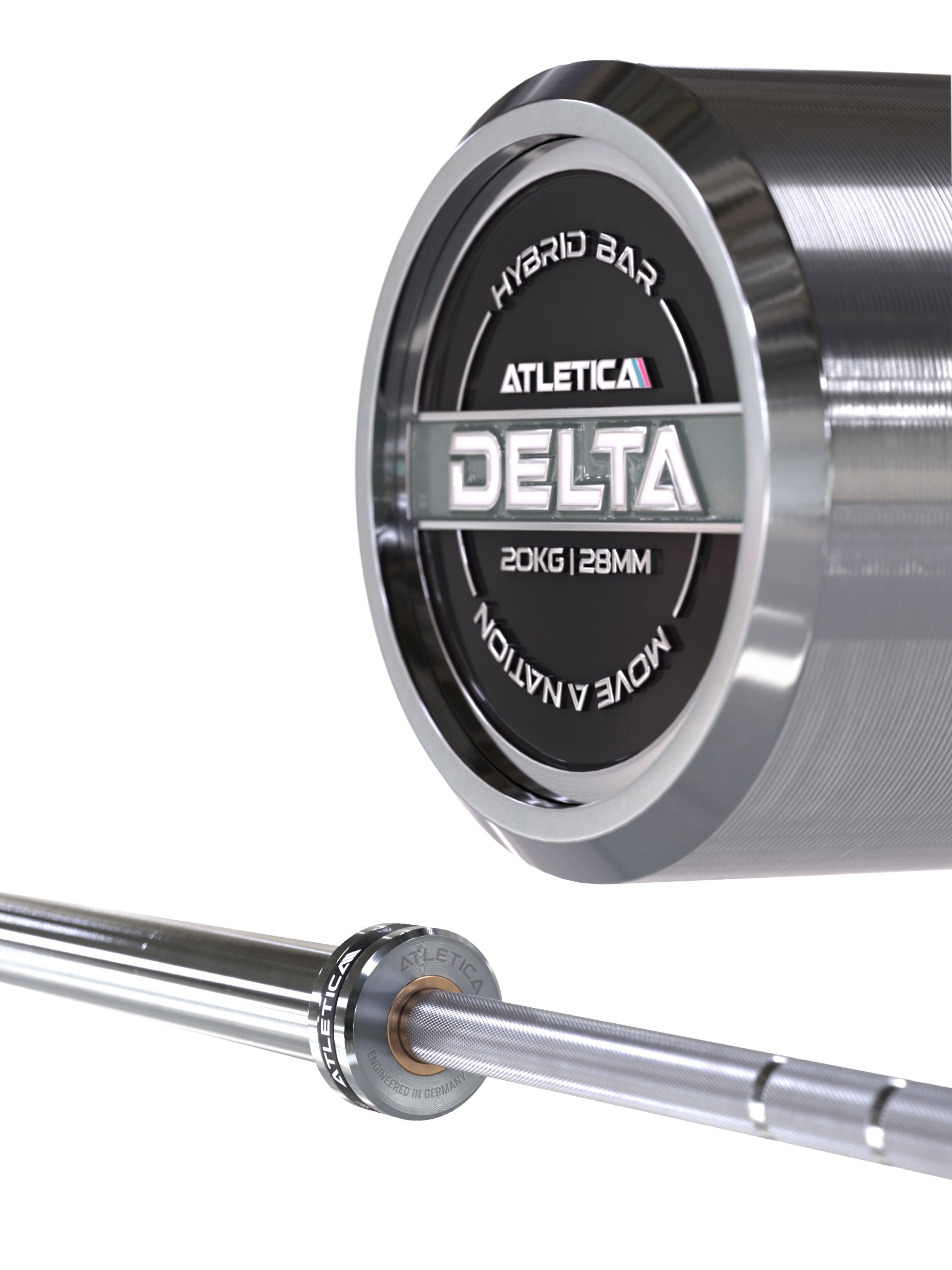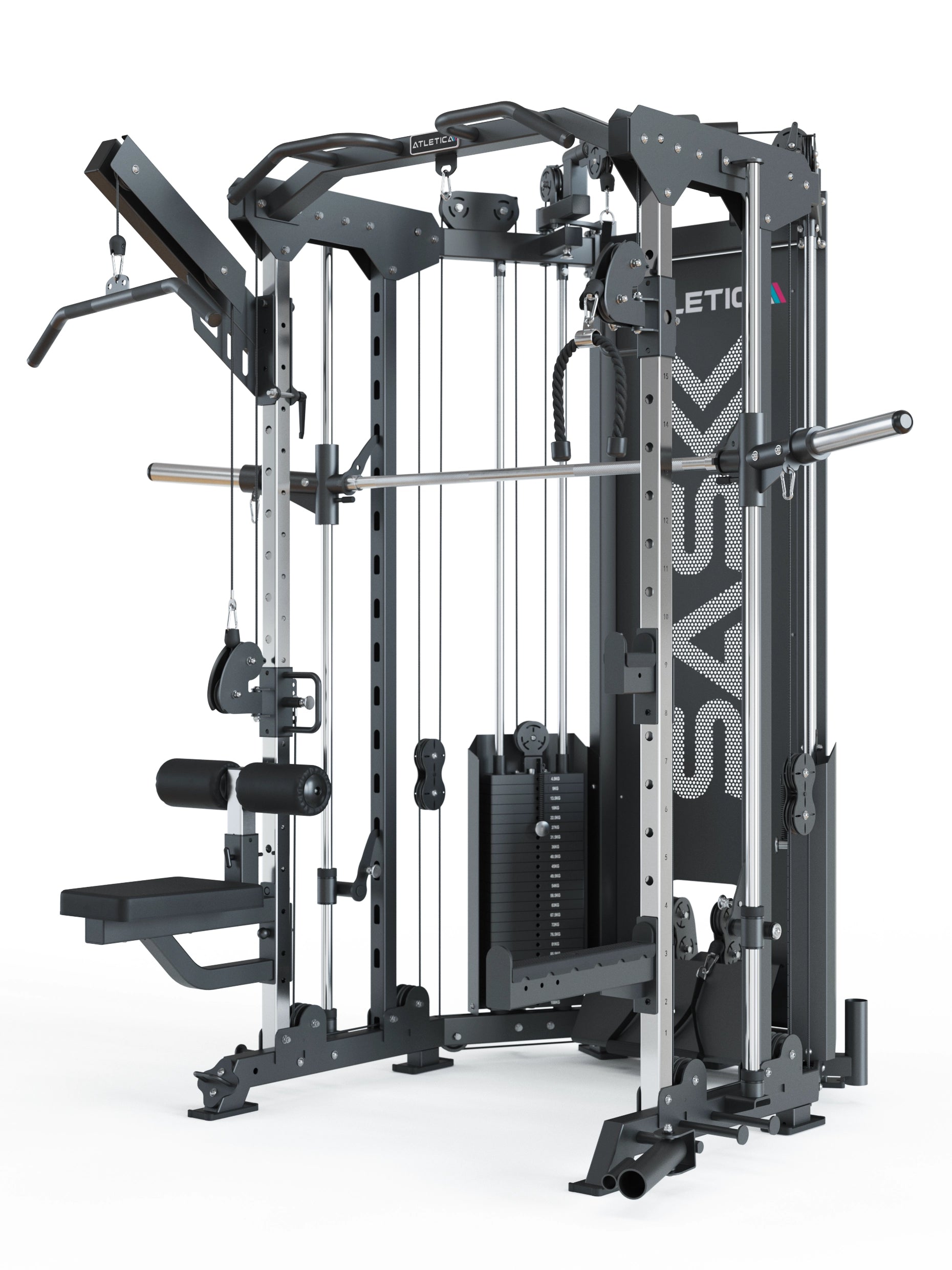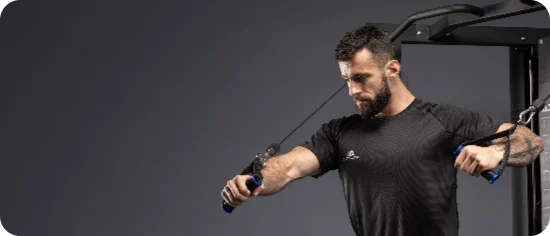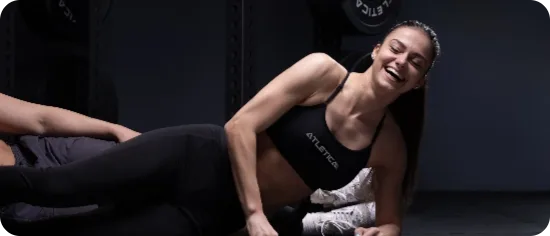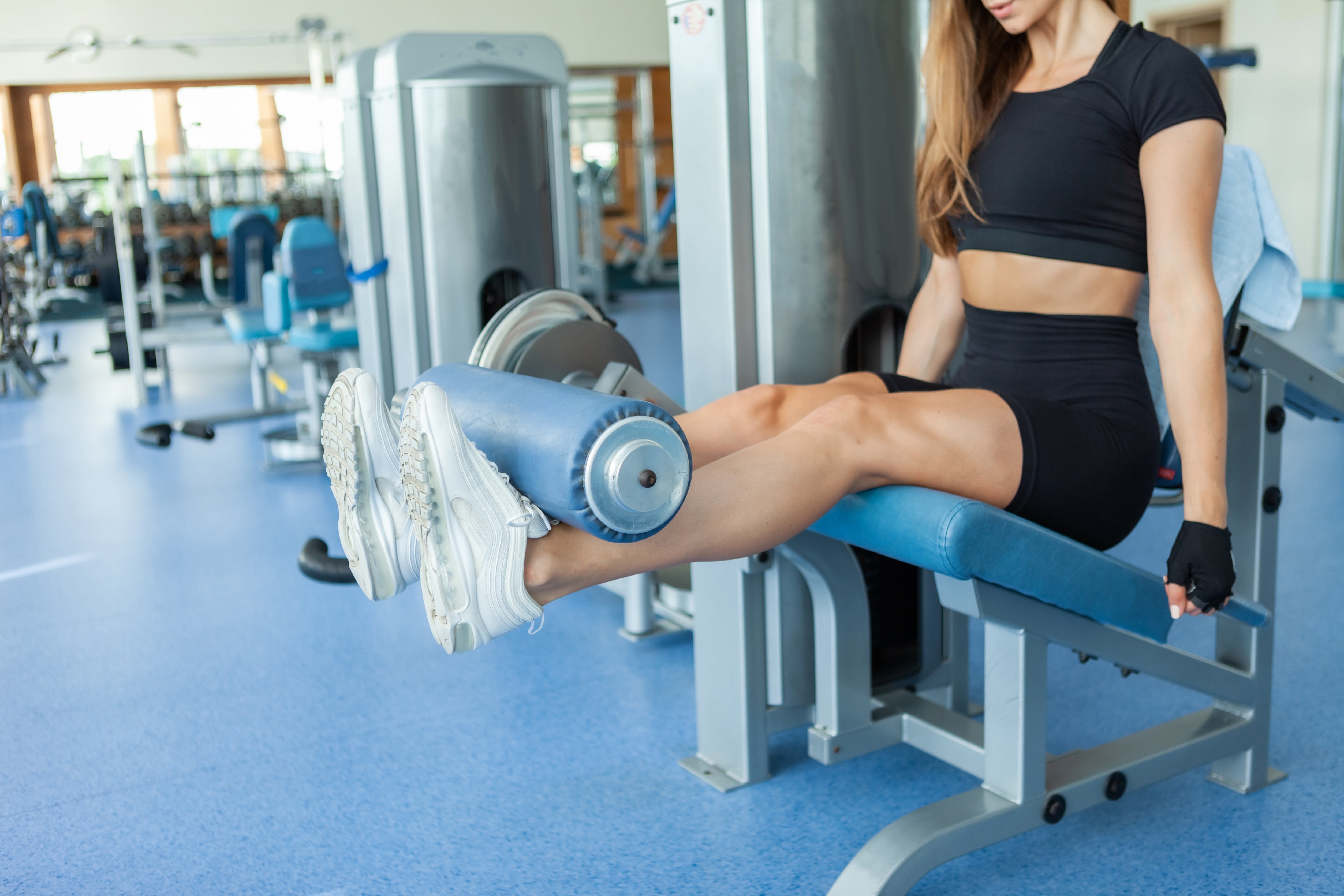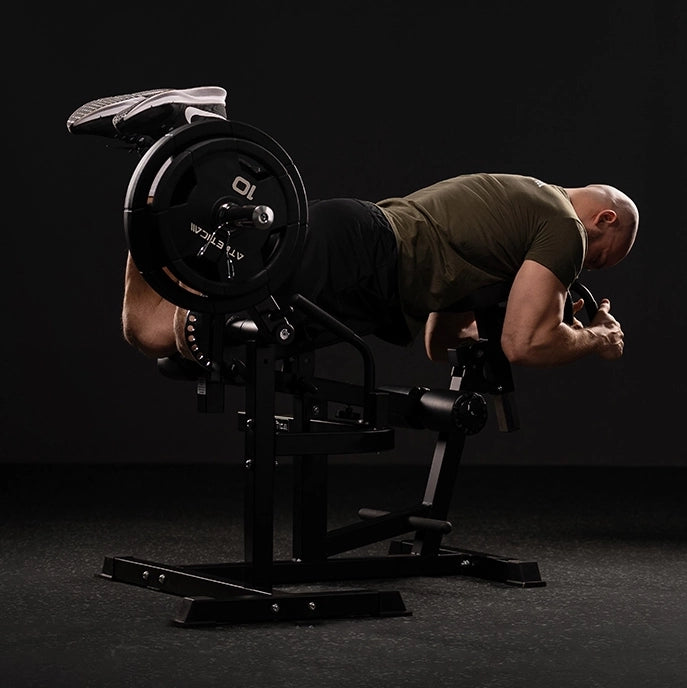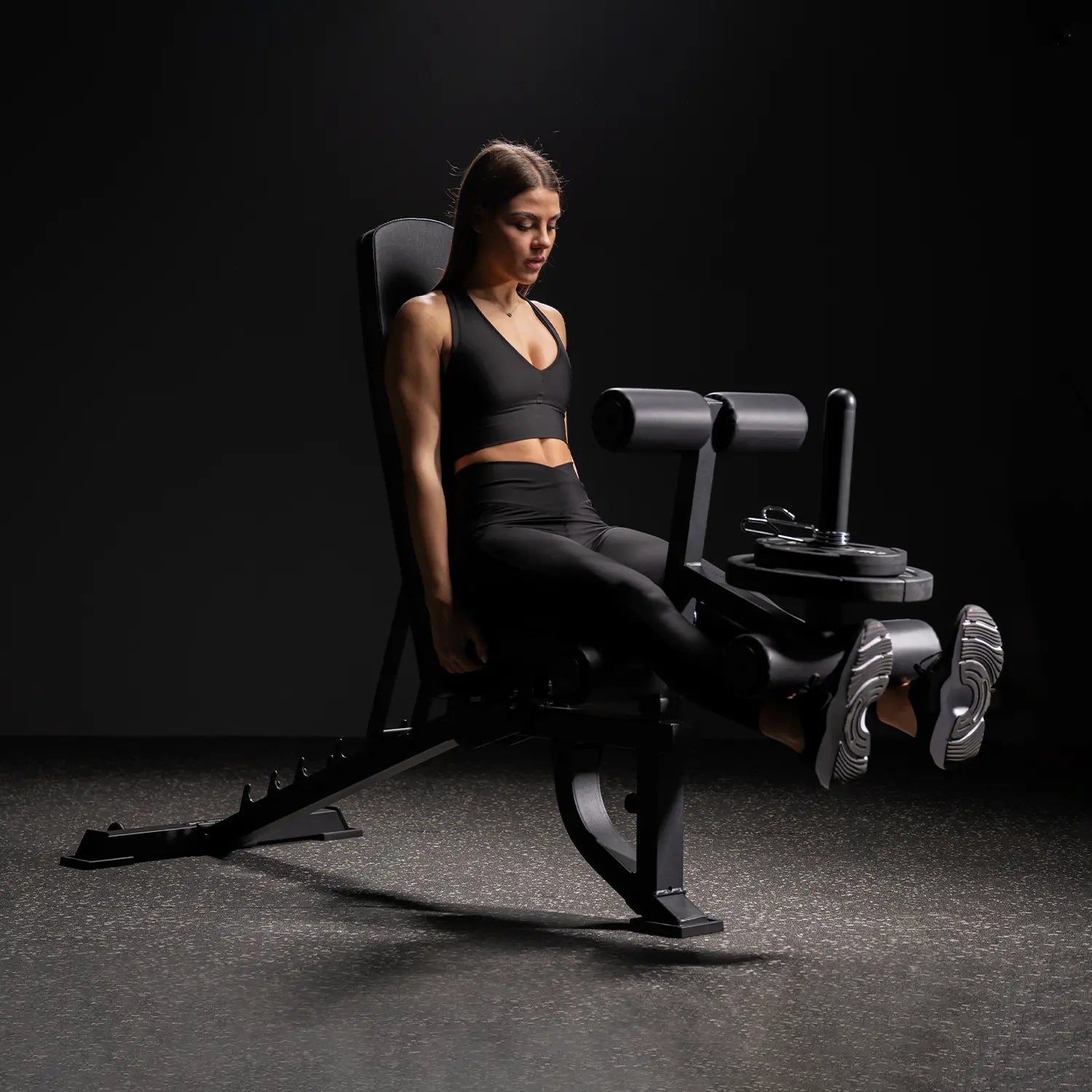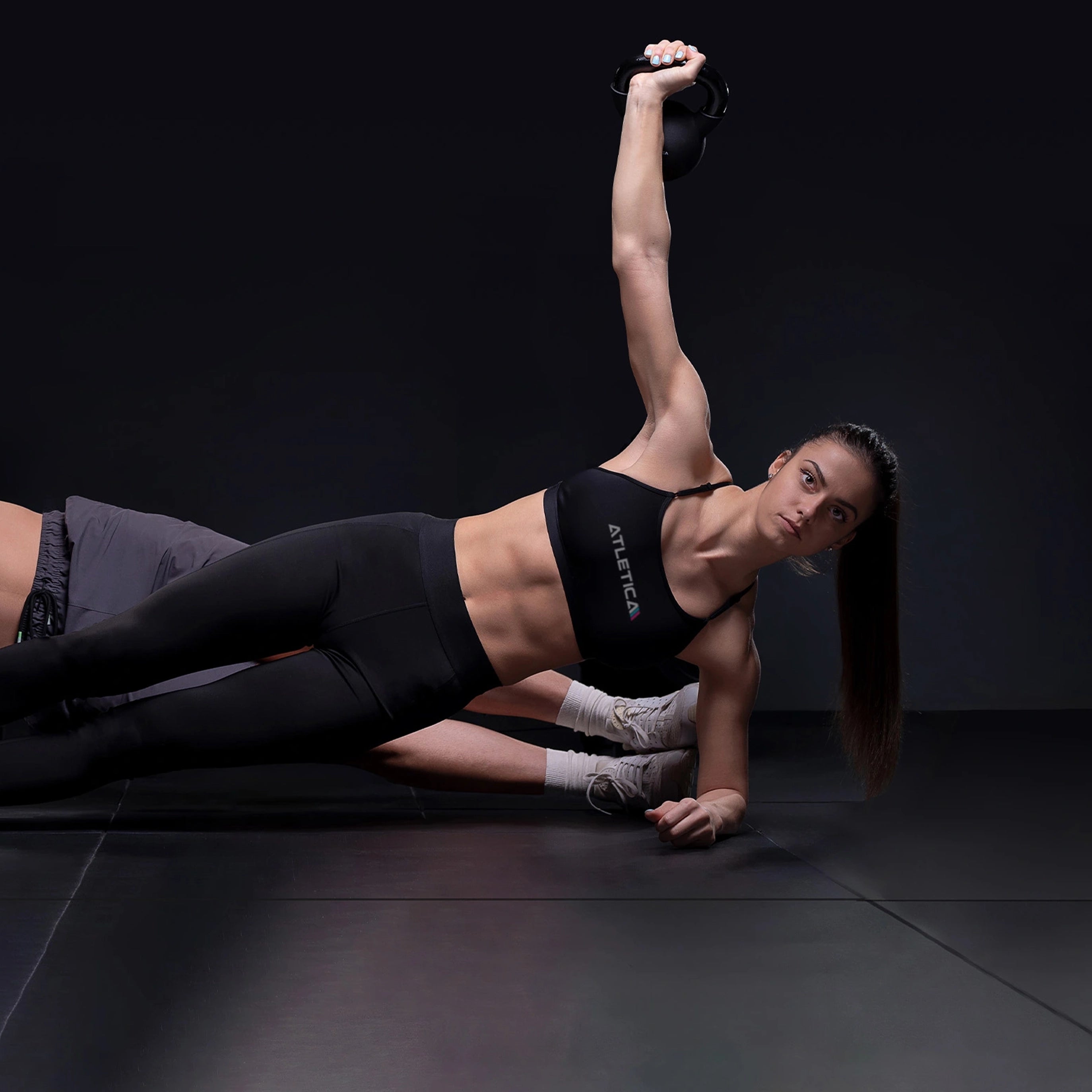Do you want to set up a cross-training gym and want to make sure you choose the right equipment? In this article, you will learn everything you need to know to optimally equip your cross-training gym. From the right equipment to the important criteria you should pay attention to - here we show you how to create a versatile and professional training environment that offers both beginners and experienced athletes the perfect cross-training experience.

Setting up a CrossTraining Gym – why the right equipment is so important
Setting up a cross-training gym requires not only a clear idea of the members' training needs, but also careful selection of the right equipment. Cross-training is known for its varied and intense workouts that cover different fitness areas such as strength, endurance, agility and speed. Therefore, the equipment is the heart of a successful cross-training gym, as it forms the foundation for training and offers athletes the opportunity to constantly improve.
The right equipment not only ensures that workouts are effective and challenging, but also safe. Cross-training exercises often involve complex movements and working with heavy weights, which is why high-quality and stable equipment is essential. Missing or unsuitable equipment can increase the risk of injury and affect training success. It is therefore important to invest in durable and safe equipment that can withstand intensive use.
Another important element is the versatility of the equipment. Cross training thrives on variety and the ability to combine different forms of training. The right selection of equipment makes it possible to create workouts for all fitness levels - from beginners to experienced athletes. In addition, well-selected equipment offers those training the opportunity to train both strength and endurance, which is an essential feature of the cross training approach.
In summary, the right equipment is the foundation for the success of a cross-training gym. It not only ensures safe and effective training, but also motivates members to come regularly and achieve their fitness goals.

Setting up a cross-training gym – what sports equipment do you need?
To set up a successful cross-training gym, you need a wide range of sports equipment that is tailored to the requirements of the versatile training program. Cross-training workouts combine strength, endurance, agility and speed and therefore require functional and flexible equipment that can withstand intensive use. Here are the most important sports equipment that no cross-training gym should be without:
1. Barbells and weight plates
Barbells are the heart of any cross training gym. They are essential for various lifting exercises such as deadlifts, squats and cleans. Make sure to choose Olympic barbells that are designed for intense weight lifting. These also include bumper plates (rubber weight plates) that are used for the typical cross training exercises such as clean & jerk and snatch and protect the floor when dropped.
2. Kettlebells
Kettlebells are an indispensable cross-training tool because they enable functional strength and endurance training. They are used for swing exercises such as kettlebell swings, goblet squats or Turkish get-ups and train the entire body. Kettlebells are versatile and are suitable for both beginners and advanced users.
3. Dumbbells
Dumbbells are important in a cross-training gym for a variety of exercises that train unilateral strength and stability. They are used for exercises such as dumbbell snatches, dumbbell thrusters or lunges. Dumbbells should be available in different weight classes to cover the different needs of the trainees.
4. Pull-up bars
A sturdy pull-up bar is a must in every cross-training gym. It is used for classic cross-training exercises such as pull-ups, kipping pull-ups, toes-to-bar and muscle-ups. Make sure that the pull-up bar is sturdy enough to safely perform dynamic movements.
5. Plyometric boxes
Plyo boxes are indispensable for box jumps, step-ups and many other dynamic exercises. They help to improve explosive power and leg strength. The boxes are available in different heights and should be non-slip and stable to ensure safety during training.
6. Medicine balls
Medicine balls are often used in cross-training workouts, such as wall balls or ball slams. They are a great way to build strength and endurance. It is important to offer medicine balls in a range of weights to meet the needs of different fitness levels.
7. Rope Trainer (Battle Ropes)
Battle ropes are ideal for training strength and endurance. They offer an intensive, dynamic workout for the entire upper body and are often used for interval sessions in cross-training workouts. The ropes should be made of durable material to withstand intensive use.
8. Rowing machines
Rowing machines are one of the most popular cardio machines in cross training. They offer an effective full-body workout that increases both endurance and strength. Rowing machines like the Concept2 are known for their durability and are perfect for intensive use in a cross training gym.
9. Jump ropes
Jump ropes are essential for training endurance and coordination. They are often used for double unders, a classic exercise in many cross-training workouts. High-quality speed ropes allow for quick turns and should be adjustable to suit the user's height.

10. Slam Balls
Slam balls are sand-filled medicine balls used for power exercises such as ball slams. They provide excellent training for explosive power and core stability. Because they are designed to be thrown to the ground with high force, they are robust and suitable for intense training.
11. Sandbags
Sandbags are perfect for functional exercises such as carrying, lifting and throwing. They provide an intense workout that improves both strength and endurance. In a cross training gym, they are a popular addition for full-body workouts.
12. Wall bars and rings
Wall bars and rings are indispensable for gymnastic training. Gymnastic rings are particularly important for exercises such as muscle-ups, ring dips and L-sits. They not only train strength, but also flexibility and body control. Rings should be adjustable in height and securely fastened.
13. Squat racks and power racks
Squat racks and power racks are essential for safe training with barbells. They allow exercises such as squats, shoulder presses or bench presses. These devices also offer safety features that make training with heavy weights safer.
14. Assault Bikes or Air Bikes
These special cardio machines offer an intense full-body workout that is often used in cross-training workouts. They combine pedaling with arm movement and provide an extremely strenuous endurance workout. Assault bikes are known for their robustness and durability and can withstand intense use.
15. Functional training area
In addition to the equipment, a cross training gym should have enough open space that can be used for bodyweight exercises, burpees, sprints or the use of sandbags and other mobile equipment. Rubber flooring is ideal for protecting the floor while providing a non-slip, safe training environment.

A well-equipped cross-training gym needs a wide range of functional sports equipment that enables both strength and endurance training. From barbells and pull-up bars to rowing machines and plyo boxes - the variety and quality of the equipment are crucial to the success of the gym and the satisfaction of the members.
Buying the right sports equipment – what should you pay attention to?
When purchasing exercise equipment, there are numerous factors you should consider to ensure that the equipment meets your needs and those of your members. Whether for a commercial gym, a cross-training gym or a home gym, the quality, functionality and safety of the equipment are crucial to training success and the longevity of the investment. Here are the most important points to look out for:
1. Quality and workmanship
The quality of sports equipment is one of the most important aspects when buying. Robust materials such as steel frames, durable upholstery and stable connections ensure durability and resistance, even with intensive use. Especially in a commercial environment, where equipment is subjected to heavy daily use, it is important to invest in durable equipment to avoid frequent repairs or replacements.
2. Security
Safety is the top priority. Make sure that the equipment meets all necessary safety standards. Adjustable safety systems, non-slip handles and well-made weights help to minimize the risk of injury. Equipment with guided movements or safety mechanisms such as squat racks with shelves offer additional protection for users, especially when exercising with heavy weights.
3. Ergonomics and user-friendliness
Ergonomically designed exercise equipment is important to ensure correct posture and movement. Adjustable seats, handles and padding make the equipment adaptable to different body sizes and fitness levels, making training comfortable and safe for every user. Simple operation without complex adjustment mechanisms also contributes to user-friendliness.
4. Versatility and functionality
Multifunctional equipment offers a variety of training options and saves space. Equipment that allows multiple exercises in one device is a good choice, especially for smaller fitness studios or home gyms. A cable pull machine or multi-press , for example, allows you to train different muscle groups, which increases the variety of exercises and appeals to more users.
5. Maximum load capacity
The maximum load capacity of the equipment is an important factor, especially in fitness studios or cross-training gyms, where it is used by people with different fitness levels. Equipment with a high load limit is especially necessary for heavy strength exercises such as squats, deadlifts or bench presses. Make sure that the equipment is designed for regular, high-intensity training.
6. Space requirements and spatial planning
Before you buy exercise equipment, you should make sure that there is enough space in your gym. Large equipment such as treadmills, rowing machines or power racks require a lot of space, so the training area around the equipment also offers enough freedom of movement. Multifunctional equipment or space-saving solutions help to make the best use of the available space.

7. Maintenance effort
High-quality equipment should be as low-maintenance as possible. Low-wear cables, smooth-running rollers and robust joints extend the service life and minimize maintenance. Before buying, find out whether the manufacturer offers a good maintenance or repair service and whether spare parts are readily available. This is especially important in commercial studios, where downtime can be expensive.
8. Costs and budget
Budget plays a key role when purchasing sports equipment. Cheaper equipment may seem attractive at first, but it often lacks durability and stability. High-quality equipment offers a longer lifespan and is therefore a better investment as it needs to be replaced or maintained less often. It is worth investing in quality to save costs in the long run.
9. Warranty and Service
The manufacturer's warranty conditions are also a decisive criterion. A long warranty period often indicates the quality of the device. In addition, the manufacturer's customer service should be reliable in order to provide quick support in the event of problems or questions. Good service is particularly important when repairs are necessary or spare parts need to be obtained.
10. Design and Aesthetics
The design of the equipment is not just a question of aesthetics, but also contributes to the atmosphere in your gym. Modern and professional-looking equipment ensures that users feel comfortable and enjoy training. Especially in commercial gyms, an attractive design can help to increase the image and attractiveness of the studio.
When purchasing exercise equipment, it is important to look for quality, safety and versatility. Ergonomically designed and low-maintenance equipment that is suitable for different fitness levels offers the greatest long-term benefit. By investing in high-quality equipment, you create a safe and effective training environment that supports the success of your gym or home gym.

Set up a CrossTraining Gym – get free advice
You can find all the best equipment for your gym, cross training gym or home gym in the Atletica online shop . We offer a large selection of high-quality, durable and versatile sports equipment that is perfectly tailored to your needs. And the best thing: you can get free advice now! Our experts will help you find the ideal equipment for your project. Visit us today and start your fitness project with Atletica!






